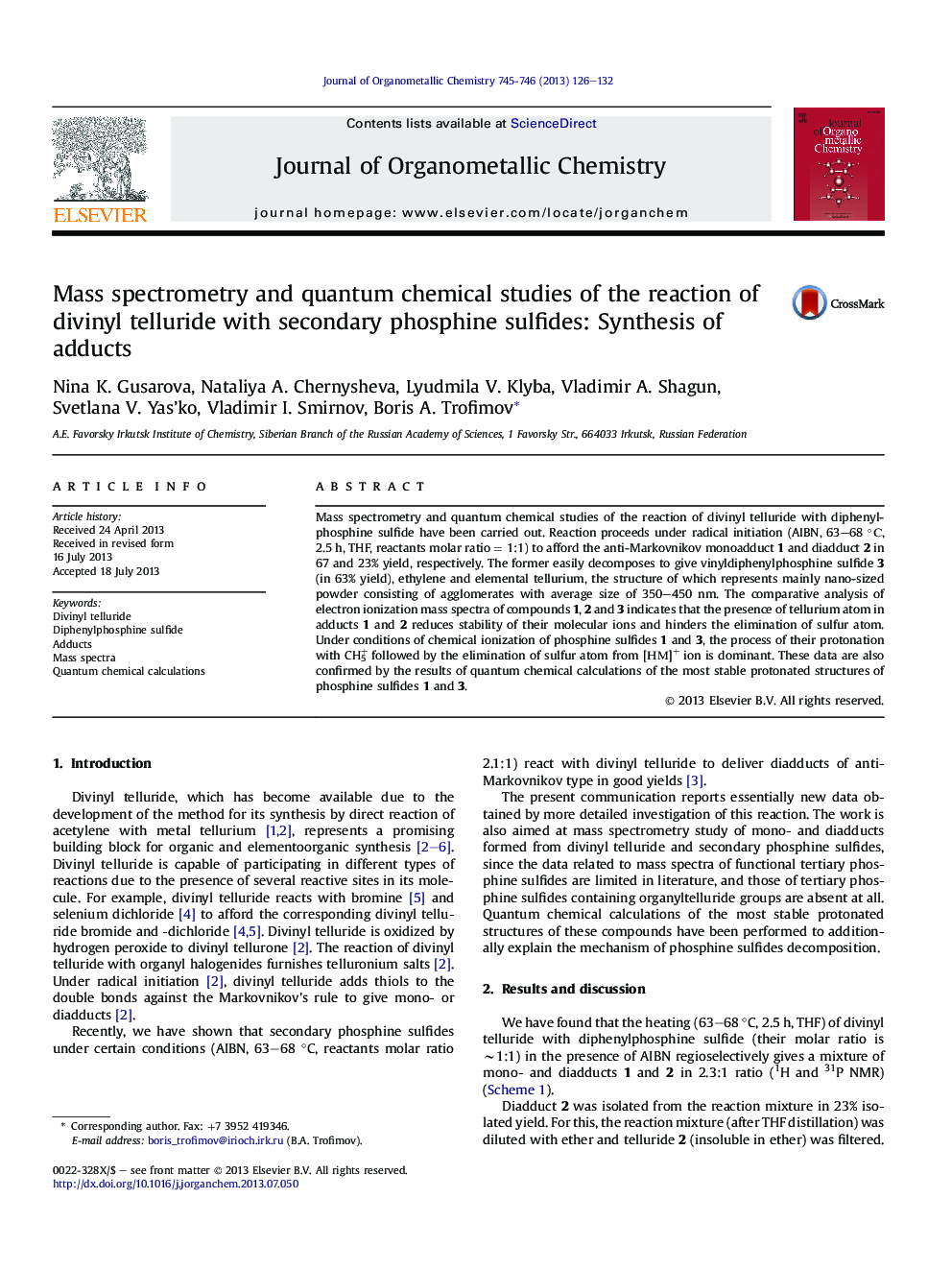| Article ID | Journal | Published Year | Pages | File Type |
|---|---|---|---|---|
| 1321524 | Journal of Organometallic Chemistry | 2013 | 7 Pages |
•Synthesis of adducts from divinyl telluride and secondary phosphine sulfides.•Easy decomposition of monoadduct to vinyldiorganylphosphine sulfide.•Mass spectrometry and quantum chemical studies of the reaction products.
Mass spectrometry and quantum chemical studies of the reaction of divinyl telluride with diphenylphosphine sulfide have been carried out. Reaction proceeds under radical initiation (AIBN, 63–68 °С, 2.5 h, THF, reactants molar ratio = 1:1) to afford the anti-Markovnikov monoadduct 1 and diadduct 2 in 67 and 23% yield, respectively. The former easily decomposes to give vinyldiphenylphosphine sulfide 3 (in 63% yield), ethylene and elemental tellurium, the structure of which represents mainly nano-sized powder consisting of agglomerates with average size of 350–450 nm. The comparative analysis of electron ionization mass spectra of compounds 1, 2 and 3 indicates that the presence of tellurium atom in adducts 1 and 2 reduces stability of their molecular ions and hinders the elimination of sulfur atom. Under conditions of chemical ionization of phosphine sulfides 1 and 3, the process of their protonation with CH5+ followed by the elimination of sulfur atom from [НМ]+ ion is dominant. These data are also confirmed by the results of quantum chemical calculations of the most stable protonated structures of phosphine sulfides 1 and 3.
Graphical abstractThe analysis of EI and CI mass spectra of compounds 1–3 as well as the quantum chemical calculations results for the most stable protonated structures of phosphine sulfides 1 and 3 are discussed.Figure optionsDownload full-size imageDownload as PowerPoint slide
